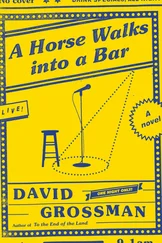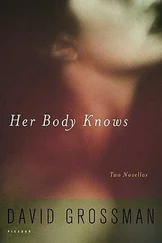“What does it show?”
“Not sure,” he said.
“Come on. I thought you were a wizard.”
He sighed, then he looked at me with eyes that had seen the top three levels of the abyss, that had looked out across countless battlefields and into the eyes of the Lich King. “If I tell you, will you swear to stop bothering me?”
“Fine.”
“First of all, I can’t really tell if she like-likes you,” he began. “But she’s lawful neutral.”
“And?”
When he was done, I knew a bit more than I wanted to, and none of it answered my question.
Some of it I already knew. I knew that Lisa’s mother was a librarian, her father was a paleontologist. She was an only child.
I knew she was five feet tall for most of high school and carried a huge backpack, so she had to walk looking up a little. She got beaten up by a group of older girls once, and didn’t tell her parents.
She got crushes no one knew about. She drew in her textbooks. When her father bought an Apple][Plus, she didn’t know girls weren’t supposed to use it. She played Sierra On-Line games and solved Mystery House in a long weekend.
Her first serious boyfriend was in freshman year of college. He was notionally a playwright. For six months they were that couple that was always making out in public. Then later you just noticed they were never in the same room together.
After sixth grade she stopped having friends for a long time. Lots of people joked that she was a witch or a lesbian. She thought about whether she should be a witch. Her parents had all kinds of books in the house. She read The Anarchist Cookbook and the Whole Earth Catalog . Her dad died.
Somehow everybody at school knew about it, and they were surprisingly decent. She started eating lunch with a circle of people from honors English. She didn’t actually hate people. She sang second soprano in the school choir. She had a short, intense friendship with a tall girl named Sarah that ended abruptly.
A lot of boys who went to high school with her developed severe retroactive crushes on her in college, all around the end of sophomore year.
Computer science is a good discipline if you like to be left alone.
She last got in a fight in fifth grade. It didn’t stop until two teachers pulled her off, a fact no one at school ever seemed to forget. The other girl has a tiny discolored patch near her right cheekbone from where her face rubbed against the asphalt. They never became friends.
She wrote stories in a notebook in a big looping hand that her teacher let her turn in for extra credit, a lot of which were about time travel. She even wrote a rambling novella stretched over several spiral-bound notebooks. She made a graphic adventure game based on it and gave it to her mother as a birthday present. Her mother kept it on a shelf but she never played it.
Junior year of college she started hanging out in the twenty-four-hour computer lab more. She tried smoking pot. Her roommates stopped seeing much of her. They’d see her sleeping in a pile of clothes during the day. That spring she had a series of one-night stands, mostly with people she met at parties at the campus radio station, where she was interning as a sound engineer. She started hanging out with the same group of CS majors a lot. Some of them knew Simon. She went on elevator surfing expeditions, and smoked even more pot. She started collecting copies of building keys. She got a semiregular boyfriend that her roommates hated. She threw up from drinking for the first time. At Christmas her mother asked her if she thought she needed therapy.
She started drinking more. She had a line of green Jägermeister bottles on the windowsill of her dorm room. She still slept a lot during the day. That fall she failed a class. Her honors thesis was entitled “A Closed-Form Solution to the Radiance Transfer between Two Distant Spheres,” and it drew a lot of attention from the faculty. In January, she started avoiding her adviser. One night her roommates heard a sound, half sobbing, half screaming, and found her with a bunch of 3.25-inch disks she had snapped in half.
Her roommates finally told her boyfriend to stop calling. She finished her thesis and graduated late, with honors. Simon offered her a job, which she turned down. That summer, fall, and spring she lived with her mother in her old room, which was probably the last happy period in her life. She applied to the Columbia grad program in computer science, got in, and moved to the city. She was the kind of person old people in her building liked and the people at the bodega said hi to every day. She still smoked pot sometimes; she went to department happy hours and campus Star Trek marathons and contra dancing. She had her last name legally changed. She did research on natural language processing. She quit after a year and a half. She e-mailed Simon and asked him for a job and moved to a big group house in Somerville with a mix of software engineers, IT workers, and engineering students.
She had dinner with her mother twice a week. She saw a therapist who made notes about low affect and a thing called dismissive-avoidant attachment style. She got asked a lot about the period around her father’s death. She stopped going after four months. She still read a lot of science fiction.
The crucial fact of whether or not a particular area is player accessible was hard to determine. The WAFFLE engine tended to generate unexpected scenarios. In the very first puzzle I built for Winter’s Crown, I learned this lesson. You were on a narrow road leading north through the Celestials, a mountain range that cut diagonally across the continent. You needed to cross a river. This was an easy one. The drawbridge was up, but if you fired arrows you could cut the ropes and it would fall down to your side.
I handed this one to Jared, who proceeded to knock over a tall tree so that it lay across the chasm. I reset the level and told him not to do that. He then spawned a wizard and levitated himself over the gap.
“Let’s just say you don’t have levitate.”
He threw a grappling hook across the river and yanked until the ropes gave way.
“And you don’t have a grappling hook.”
He then froze the river.
“No freeze spells.”
He cast Lava Storm; the flying lava blobs struck the water and congealed. Soon there were stepping-stones of solidified lava.
“No lava!”
He took off his armor and swam. He pushed rocks into the water until he had enough stepping-stones. He cast Three-Second Invulnerability on himself, then cast Fireball; the explosion threw him over the chasm and a ways down the road. He polymorphed himself into a giant eagle and flew across. I gritted my teeth.
“So what if you didn’t have any items or spells?” I told him. “Just a bow and arrow.”
He thought about it for a while, and then shot arrows across the gap until he’d cut both of the ropes holding it up. The drawbridge wobbled, leaned, then fell with a crash. Problem solved.
“Nice puzzle.” He went back to his desk.
I could see why some designers thought of players as the enemy. As a designer I could see a perfect scenario playing out in my head, but players didn’t care about it in the slightest, they just followed their own script. In the WAFFLE engine, this was more true than elsewhere. It gave players a great many tools that interacted with the world and each other. Used creatively, or in combination, these tools could enable a player to do almost anything. I’d seen a playtester climb into the sky by startling a flock of birds, casting Stop Time, then leaping from bird to bird to land on the back of a dragon that took him so high he could see the false sun was a thin yellow disk pasted to the ceiling of the world.
Читать дальше





![Ally Carter - [Gallagher Girls 01] I'd Tell You I Love You But Then I'd Have to Kill You](/books/262179/ally-carter-gallagher-girls-01-i-d-tell-you-i-lo-thumb.webp)






